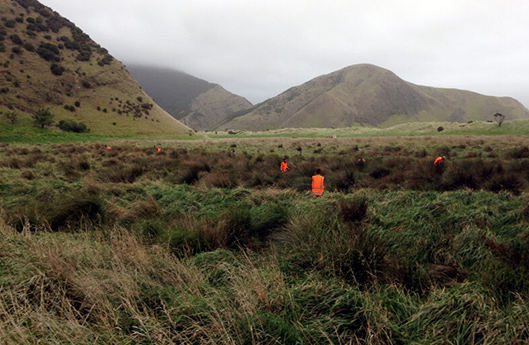Biodiversity protection

According to the OMV Group Environmental Management Standard and Environmental and Social Impact Assessment Procedure, all OMV activities must be conducted in such a way as to cause minimal disturbance to protected areas and local flora and fauna. Observed or predicted direct and indirect impacts on biodiversity and ecosystem services (BES) are described and analyzed in the environmental impact assessment. BES screenings are carried out at all relevant sites to identify as far as reasonably possible the potential for the presence of nationally or globally threatened species, legally protected threatened or fragile ecosystems, and internationally recognized areas with sensitive biodiversity. In the event of significant observed or predicted impacts, we apply the mitigation hierarchy, and action planning gives priority to avoidance and minimization over restoration and offsetting of the impact.
In 2019, we supported the following biodiversity-related projects in New Zealand:
- A partnership with Ngāti Koata and the Department of Conservation for the Moawhitu lake and wetland regeneration project
- A partnership with the Rotokare Scenic Reserve Trust to reintroduce the endemic hihi bird (stitchbird) back into this reserve located just outside of New Plymouth
- A partnership with Tiaki Te Mauri o Parininihi Trust in North Taranaki for critical pest control work and providing a safe haven for the endangered kōkako, along with other native wildlife, such as the kiwi
- A partnership with the National Institute for Water and Atmospheric Research to undertake passive acoustic monitoring to assess cetacean distribution and movement through New Zealand’s Cook Strait
- A partnership with the Friends of Mana Island to assist with the regeneration of Mana Island to provide a secure ecosystem for endangered species
- A partnership with Ngāti Tara Sandy Bay Society to restore and protect the native sand dunes, which are home to rare shorebirds, such as the endangered New Zealand dotterels
- A partnership with Montfort Trimble Foundation (MTF) for a period of three years to fund a project for the regeneration of threatened native mistletoe (Tupeia antarctica) at Rewanui Forest Park, near Masterton
- A partnership with Environmental Education for Resource Sustainability Trust to fund the Paper4Trees project in Taranaki, a project where local schools and kindergartens are rewarded with native trees for their recycling efforts
In 2019, OMV Petrom initiated the development of a mobile application to enable employees to easily identify protected species observed within their operational boundaries. This project contributes to improving biodiversity conservation monitoring and increasing awareness on this topic.